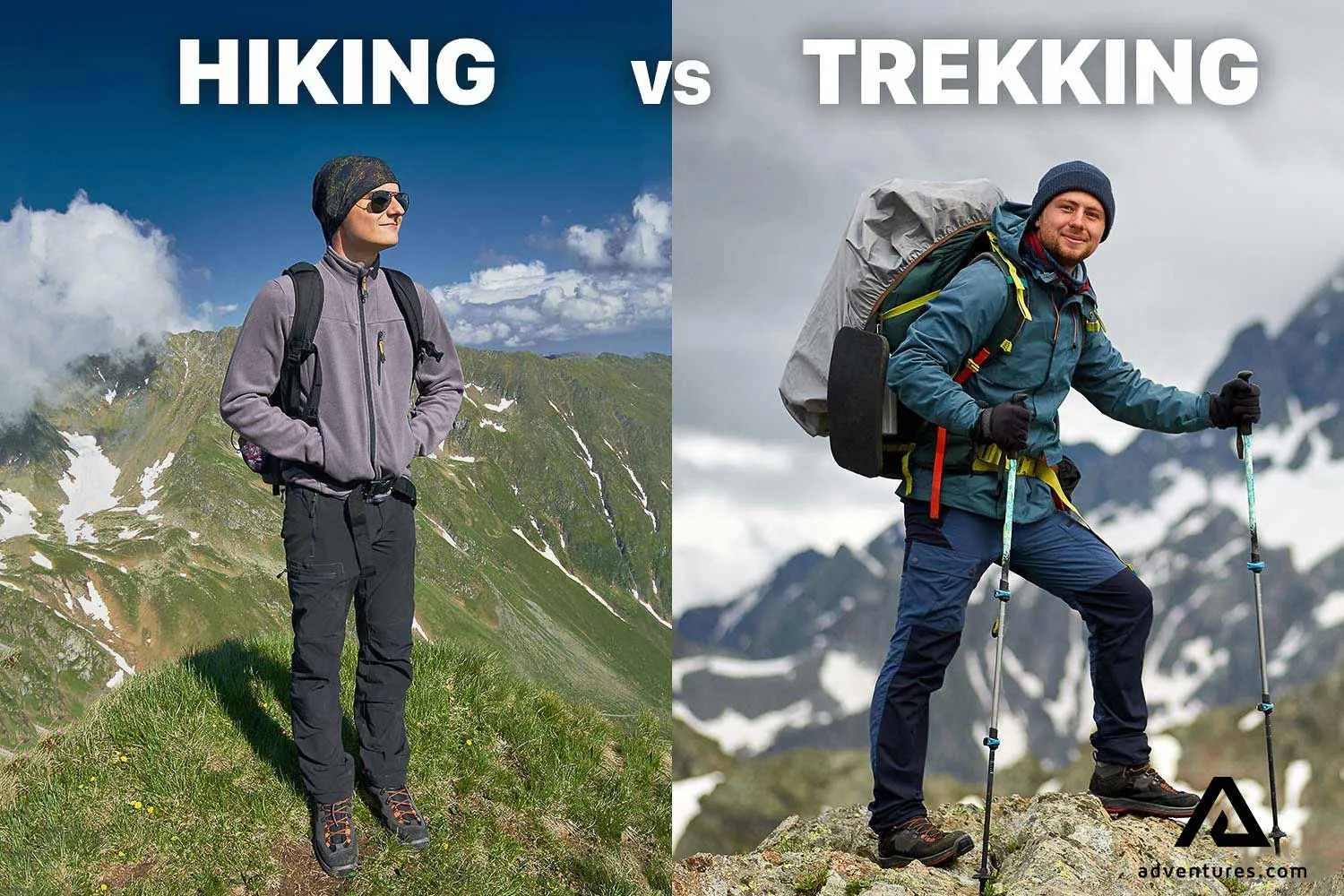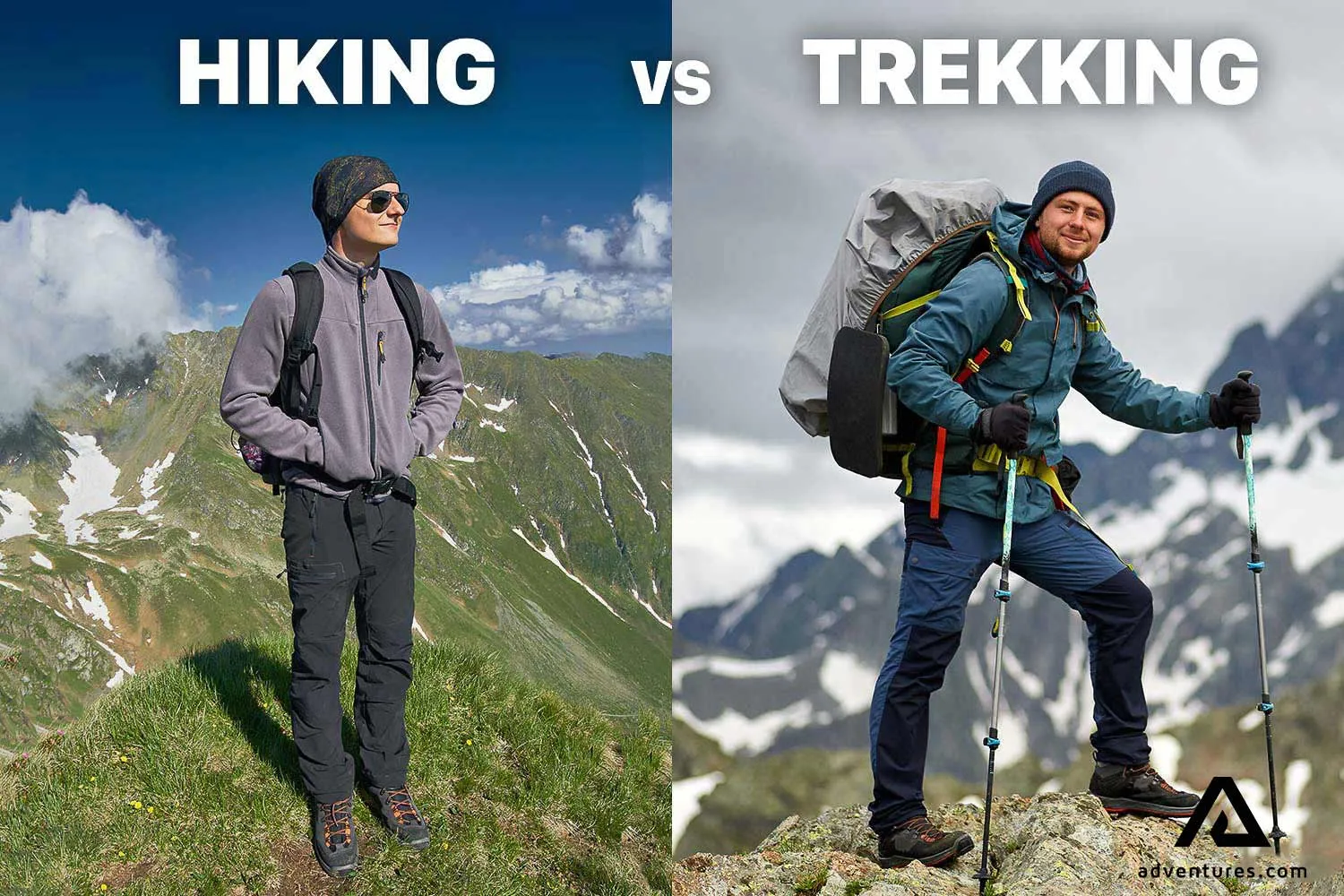When I first started exploring the outdoors, I often wondered about the difference between hiking and trekking. After years of experience on various trails and expeditions, I've learned that while these terms are often used interchangeably, they represent distinctly different outdoor adventures. This comprehensive guide will help you understand when to say you're going for a hike versus embarking on a trek, and how to prepare for each. Whether you're planning your first outdoor adventure or looking to expand your horizons, Nature Guests is here to guide you through every step of your journey.

What is Hiking? Understanding the Basics
When we talk about hiking vs trekking, it's essential to start with clear definitions. Hiking is fundamentally about walking on established trails, typically in natural environments like forests, mountains, or national parks. During my early adventures, I discovered that hiking offers the perfect introduction to outdoor recreation, allowing you to connect with nature while following well-marked paths that provide clear direction and manageable challenges.
The beauty of hiking lies in its accessibility. Most hiking trails are designed with various skill levels in mind, from gentle nature walks suitable for families to more challenging day hikes that test your endurance. I've guided countless beginners on their first hiking experiences, and the joy on their faces when they reach a scenic overlook never gets old. Understanding trail difficulty ratings is crucial for choosing the right hiking experience for your fitness level and experience.
What sets hiking apart in the hiking vs trekking debate is its typical duration and infrastructure support. Most hikes are day trips, ranging from a few hours to a full day, with hikers returning to their starting point or a nearby accommodation by evening. The trails often feature amenities like rest areas, information boards, and sometimes even facilities. This makes hiking an excellent choice for those who want to experience nature without the commitment and extensive preparation required for longer expeditions.
From a fitness perspective, hiking provides excellent cardiovascular exercise while being adaptable to different ability levels. You can choose shorter, flatter trails for a gentle workout or tackle steep mountain paths for a more intense challenge. The key is that hiking typically involves well-maintained trails with clear markings, making navigation straightforward even for newcomers to outdoor adventures. This accessibility factor is one of the primary distinctions when comparing hiking vs trekking options.
What is Trekking? Beyond Simple Walking
Trekking represents the more adventurous side of the hiking vs trekking spectrum. Unlike hiking, trekking involves multi-day journeys through often remote and challenging terrain. My first major trek in the Himalayan foothills taught me that trekking is as much a mental challenge as it is physical. It requires carrying everything you need for survival, often for several days or even weeks, while navigating paths that may be poorly marked or completely unmarked.
The essence of trekking lies in its immersive nature. When you're trekking, you're not just visiting nature – you're living in it. This means dealing with changing weather conditions, sleeping in tents or basic mountain huts, and often having limited access to modern conveniences. Understanding essential safety practices becomes critical when you're days away from help and must be completely self-sufficient.
Trekking routes often take you through diverse ecosystems and elevation changes that can dramatically alter the landscape and climate within a single journey. I've experienced everything from tropical valleys to snow-capped peaks on a single trek, requiring multiple layers of clothing and adaptable gear. This variability is a defining characteristic in the hiking vs trekking comparison – trekking demands versatility and preparedness for multiple scenarios.
The physical and mental demands of trekking are significantly higher than typical hiking. You need excellent cardiovascular fitness, strong legs and core, and the mental resilience to push through fatigue, discomfort, and challenging conditions. However, the rewards are proportionally greater – trekking offers access to some of the most spectacular and untouched landscapes on Earth, creating memories and personal achievements that last a lifetime. The sense of accomplishment after completing a challenging trek is incomparable to shorter hiking experiences.
Key Differences Between Hiking and Trekking
Duration and Time Commitment
The most obvious difference in hiking vs trekking is duration. Hiking typically involves day trips lasting anywhere from a couple of hours to a full day. Even longer hikes usually end with a return to civilization by nightfall. I've completed countless day hikes where we started at sunrise and returned by sunset, tired but satisfied. Trekking, conversely, is defined by its multi-day nature. Most treks range from 2-3 days for beginner-friendly options to several weeks for serious expeditions like the Annapurna Circuit or Everest Base Camp.
Terrain and Trail Conditions
When examining hiking vs trekking terrain differences, hiking generally occurs on established, maintained trails with clear markings and signage. These trails often feature bridges over water crossings, steps on steep sections, and regular maintenance. Trekking ventures into more remote areas where trails may be rough, unmarked, or even non-existent. Learning to read trail signs and navigate becomes essential for trekking adventures where you might encounter river crossings, boulder scrambles, and navigation challenges.
Essential Gear Recommendation
For beginners venturing into either hiking or trekking, proper footwear is crucial. I recommend starting with quality hiking boots that provide ankle support and waterproof protection.
Physical and Mental Demands
The fitness requirements represent another crucial aspect of hiking vs trekking. Hiking can accommodate various fitness levels, from leisurely nature walks to challenging day hikes. You can adjust your pace, take breaks, and even turn back if needed. Trekking demands sustained physical effort over multiple days, often at high altitudes with heavy backpacks. Mental resilience becomes equally important as physical fitness, as you must push through discomfort, fatigue, and potentially adverse weather conditions when retreat isn't an option.
Equipment and Gear: Hiking vs Trekking Essentials
The gear requirements clearly illustrate the practical differences in hiking vs trekking preparation. For day hiking, I typically carry a lightweight daypack with essentials: water, snacks, first aid kit, navigation tools, and weather protection. The total weight rarely exceeds 10-15 pounds, making it comfortable for extended periods. Proper preparation includes understanding common trail terminology to better communicate with other hikers and understand trail conditions.

Trekking gear requirements are substantially more comprehensive and expensive. You need a large backpack (typically 40-70 liters), sleeping system including tent and sleeping bag, cooking equipment, multiple days of food, water purification methods, and extensive clothing for varying conditions. My trekking pack usually weighs 25-40 pounds, requiring specific training to carry comfortably over long distances and multiple days.
Professional Trekking Backpack Recommendation
After testing numerous packs over the years, I recommend investing in a quality internal frame backpack with proper ventilation and load distribution for serious trekking adventures.
Footwear represents a critical decision point in hiking vs trekking gear selection. Hiking can often be accomplished in sturdy trail running shoes or lightweight hiking boots, especially on well-maintained trails. Trekking typically requires full hiking boots with ankle support, waterproofing, and durable construction to handle rough terrain and provide protection from rocks and debris.
Navigation tools vary significantly between hiking and trekking. Day hiking often relies on trail maps and smartphone apps, with cell service frequently available for emergencies. Trekking requires redundant navigation methods including topographic maps, compass, GPS device, and the skills to use them effectively when electronic devices fail or batteries die in remote locations.
Trekking Poles: Essential for Both Activities
Whether you're hiking or trekking, quality trekking poles can reduce joint impact by up to 25% and provide crucial stability on uneven terrain. I never venture out without mine.
Choosing Between Hiking and Trekking: Which Is Right for You?
Choosing between hiking vs trekking depends on several personal factors including fitness level, available time, budget, and adventure goals. If you're new to outdoor activities, I strongly recommend starting with day hiking to build fitness, confidence, and basic outdoor skills. Many people underestimate the physical demands and skill requirements of outdoor activities, and hiking provides an excellent foundation for more advanced adventures.
Consider your current fitness level honestly when deciding between hiking vs trekking. Hiking allows you to gauge your abilities and gradually increase difficulty. You can start with short, flat trails and progressively tackle longer distances and elevation gains. This progression helps prevent injuries and builds the confidence needed for more challenging adventures. Many successful trekkers started with simple day hikes and developed their skills over months or years.
Budget considerations also play a significant role in hiking vs trekking decisions. Day hiking requires minimal initial investment – basic hiking shoes, daypack, and weather-appropriate clothing can get you started for under $200. Trekking demands substantial gear investment, often exceeding $1000 for quality equipment, plus ongoing costs for permits, guides, and specialized gear replacement. Understanding what you're financially prepared to invest helps narrow your options.
Sleeping Gear for Multi-Day Adventures
For those ready to transition from day hiking to trekking, a quality lightweight sleeping bag is essential. Temperature ratings and weight become critical factors for backpacking comfort.
Time availability significantly influences your hiking vs trekking choice. Hiking fits easily into busy schedules – you can complete satisfying hikes in half-day or full-day timeframes, making it compatible with weekend schedules and vacation days. Trekking requires extended time commitments, often requiring vacation time, travel arrangements, and potentially international travel for world-class trekking destinations. Consider whether you have the flexibility for multi-day adventures away from responsibilities.
Your adventure goals and personality also matter in the hiking vs trekking decision. Some people thrive on the challenge, self-sufficiency, and remote wilderness experience that trekking provides. Others prefer the accessibility, social aspects, and manageable commitment of day hiking. Both activities offer profound connections with nature, physical challenges, and opportunities for personal growth – the key is choosing what aligns with your current situation and long-term outdoor goals.
Conclusion
Understanding the differences between hiking vs trekking is essential for choosing the right outdoor adventure for your situation, goals, and abilities. While both activities share the fundamental joy of exploring natural environments on foot, they represent different levels of commitment, challenge, and reward. Hiking offers accessible, flexible opportunities to connect with nature while maintaining the comfort of returning home each day. Trekking provides immersive wilderness experiences that test your limits and create lasting memories through multi-day adventures in remote locations.
The key to success in either hiking vs trekking lies in honest self-assessment, proper preparation, and gradual skill development. Start with activities that match your current fitness level and experience, then progressively challenge yourself as your abilities and confidence grow. Whether you choose a peaceful afternoon hike through local trails or embark on a challenging multi-week trek through mountain ranges, both activities offer unique rewards and opportunities for personal growth.
Remember that the hiking vs trekking decision isn't permanent – many outdoor enthusiasts enjoy both activities throughout their lives, choosing based on available time, fitness level, and adventure goals. The most important step is getting started and experiencing the transformative power of connecting with nature through walking. Each trail offers lessons, challenges, and rewards that contribute to your overall outdoor experience and personal development.
As you plan your next outdoor adventure, consider the factors we've discussed: duration, difficulty, equipment requirements, and personal goals. Whether you're taking your first steps on a local nature trail or planning an epic trek through remote wilderness, the journey begins with a single step. The difference between hiking vs trekking may be significant, but both paths lead to the same destination – a deeper connection with nature and a greater understanding of your own capabilities.
Ready to Start Your Adventure?
Explore our comprehensive guides to help you prepare for your next outdoor adventure, whether it's a day hike or a multi-week trek.


